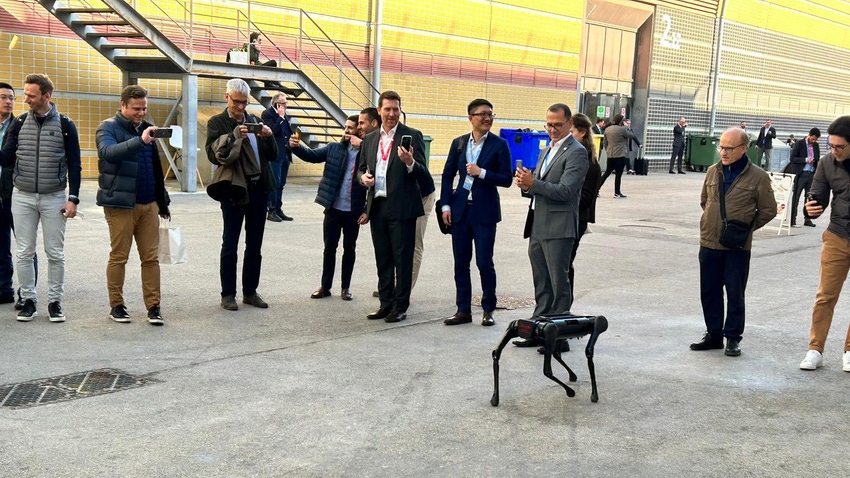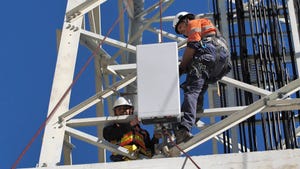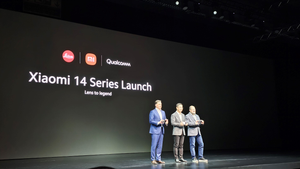Telecom is still lurching from one failure to another
How telecom bears a striking resemblance to a British sitcom character from the 1970s.

TV watchers of a certain age may remember Some Mothers Do 'Ave 'Em, a British sitcom about a quivering catastrophe of a man called Frank Spencer, who fails to hold down a succession of jobs. Episodes typically culminated in disaster for him and slapstick hilarity for the viewer, with Spencer left dangling from a rope by his foot several storeys above ground or rocketing uncontrollably on roller skates along a busy road. Spencer was the classic lovable loser. Minus the humor and lovability, he is not dissimilar to the average telco of the last 20 years.
Much like Spencer, operators should by rights be experts at diversification, having tried every job from fridge salesman to TV producer. Many of these doomed enterprises surface at Mobile World Congress (MWC), the industry's upcoming annual shindig in Barcelona, only to be forgotten about in successive years and replaced by something else. Since it moved from Cannes in 2006, MWC has thrown up all manner of technologically assisted commercial initiatives that have gone nowhere – from Joyn, a telco response to Internet messaging, to virtual dodgeball (courtesy of Deutsche Telekom) powered by edge computing.
Last year's entry in this Spencerian catalog of misfortune was something called network exposure, or networks APIs, or even network as code, depending on who you ask. The rationale demands some mental acrobatics from the average punter, but it's essentially about unearthing features of 5G, the latest generation of mobile technology, that have until now been mysteriously buried like uncut gems.
Software developers outside telecom (the sort of people who might work for a future Uber) apparently need the pickaxes and shovels of application programming interfaces (the said APIs) to dig these features out of the network and fashion them into sparkling code. They'll pay the telecom industry for access, as well. Money will percolate through the sector and collect in the pockets of telcos, which will happily use it to buy more network products. Or so the industry hopes.
It is possibly too soon to pass judgement on this APIs venture, but investors don't buy it. For proof, look at the share price of Ericsson, the company most invested in network APIs. On the Stockholm exchange, that is down a quarter since July 2022, when Ericsson splashed $6.2 billion on Vonage, the software platform that would supposedly aid its APIs venture. Ericsson has also written down the value of Vonage by $2.8 billion. Whatever executives might say about this reflecting legacy business, rather than API prospects, it was clearly not in the original plan.
No hardware refresh
Unfortunately, it is not just on this commercial side where telecom looks Spencerian. 5G remains largely without new work. Instead, it has merely followed in its 4G father's footsteps without managing to grow sales. It is a little more efficient than the old timer but has run up huge bills on new equipment. Governments and industry are still obsessed with 5G expansion, worried about losing a "5G race" against other countries. But races that involve eggs and spoons and take place at the local primary school attract more general-public interest.
Telcos, meanwhile, are downplaying 6G. In a recent position paper, an organization called the Next Generation Mobile Networks Alliance said they do not want another automatic "hardware refresh," as happened with 5G. Implementation, where possible, must be through "software-based feature upgrades of existing network elements." There is a broad sense of the shine coming off the Gs. Making networks faster and more efficient is necessary, but it won't make telcos richer and should not be a cause of great excitement.
Too harsh? Unlike Spencer, telcos do one job very well. Maintaining and operating networks requires considerable expertise. And many of their business problems are not of their making. In Europe, especially, they are heavily regulated (unlike the Internet companies often seen as an existential threat), stopped from merging with competitors and charged exorbitant fees for spectrum.
But they refuse to let go of the mad notion that Internet companies should pay a "fair share" of network costs because their applications gobble capacity. The arguments are tenuous, at best, identifying developers rather than broadband customers as users, ignoring the unlikelihood that anyone sane would buy a fiber service in the absence of bandwidth-guzzling apps, and suggesting there is a correlation between traffic growth and costs, when most investment happens during the initial rollout.
Despite the pleading, Europe's regulators sensibly saw no reason to intervene last year. But the European Telecommunications Network Operators Association (ETNO) is back this week with another lengthy white paper in which it puts two and two together and comes up with five. Europe last year "trailed" China, Japan, South Korea and the US on 5G rollout, it panics, while again calling for a "fair and proportionate contribution" to network costs by "all market actors" – meaning, of course, the big Internet companies. It seems to have escaped ETNO's attention that most of those countries have no fair-share rules of their own.
Sleepwalking into flat rates
To continue uncharitably, no one forced telcos to offer the gigabyte equivalent of a Las Vegas-style all-you-can-eat buffet. In a LinkedIn comment about Reuters' coverage of the new ETNO report, Andy Jones, the cofounder of Jonesthefone Consulting, said: "Telcos went sleep-walking into this situation when they flat-rated retail pricing of fixed broadband access at the turn of the millennium and then followed suit and repeated that grave error seven or eight years later for mobile broadband." Apparently taking aim at arguments about free-riding Internet companies, he later wrote that "only in the most perverse economies is demand considered a bad thing."
Why, then, has no telco tried to impose electricity-style metering? Probably because no one sensible would pay an extra 20% to 30% a year for mobile data, assuming this really is the average increase in consumption. If telcos could get away with that, their profits would soar, exposing the fallacy that costs are rising in lockstep with data usage. But authorities would intervene.
Even if they didn't, the consumer response would be to slash consumption of what is not actually as critical a service as the industry makes out. People can't live without water and central heating. But they should be able to cope without TikTok. Anyone who fears the smombie (smartphone zombie) and craves a return to the days of book reading and conversation actually prays this will happen.
This doesn't mean there isn't some tiered system that could work. Lo and behold, Ericsson has just taken aim at the "unlimited data" phenomenon in a new blog, proposing tiers based on speeds, service promises or other features. While this would clearly suit a vendor desperately trying to "monetize" 5G through APIs, it seems far more constructive than whingeing about "large traffic generators," the telcos' disparaging (and misleading) term for the likes of Amazon and Netflix. But there is no guarantee it would meaningfully lift industry sales. The opposite might happen as customers scout for better deals.
Not moving the needle
Then there are the truly arcane technical initiatives. In 2012, we had NFV (network functions virtualization), which would supposedly revolutionize the industry and minimize costs. Enrique Blanco, the long-serving chief technology officer of Spain's Telefónica (who resembled Ernest Hemingway until he depressingly shaved off his beard several years ago), even told Light Reading in 2015 that telcos needed NFV to fight back against the Internet players. Why wasn't entirely clear, but NFV has neither been revolutionary nor had a noticeable impact on headline costs.
Twelve years later, successors like open and cloud RAN (radio access network) technology look set to be just as anticlimactic. They ideally mean running software on general-purpose processors (GPPs) and common, off-the-shelf equipment. It's a Faustian pact that means enjoying computer-industry economies of scale in exchange for selling your soul to Intel, which still dominates that market. Supporters routinely dismiss such criticisms as nit-picking while moaning about the traditional RAN oligopoly of Ericsson, Huawei and Nokia.
Yet in a counterintuitive and bizarre turn of events, it is Ericsson that has landed the world's biggest open RAN deal so far – a $14 billion contract with AT&T. And to his credit, John Stankey, AT&T's CEO, has tried downplaying much of the open RAN hype. No equity analyst ever said a network technology choice would give AT&T "this wonderful competitive advantage, and I don't expect that you're going to write that note today," he told John Hodulik, a telecom analyst at UBS, last month. "I don't think it's going to move the needle from a capital intensity perspective."
Generative AI, it is widely anticipated, will be a major theme of this year's MWC. But that is a technology conceived and trained by the same companies that telcos blame for their network cost problems. All the deployment scenarios seem to be about efficiency rather than sales growth – chatbots for customer services, advice bots for technicians, co-pilots for software programmers. It therefore threatens not only to replace jobs but also to transfer effective responsibility to the owners of AI engines hosted in Internet facilities. Given the twenty-first century's telecom story so far, that would be a suitably downbeat ending.
About the Author(s)
You May Also Like












